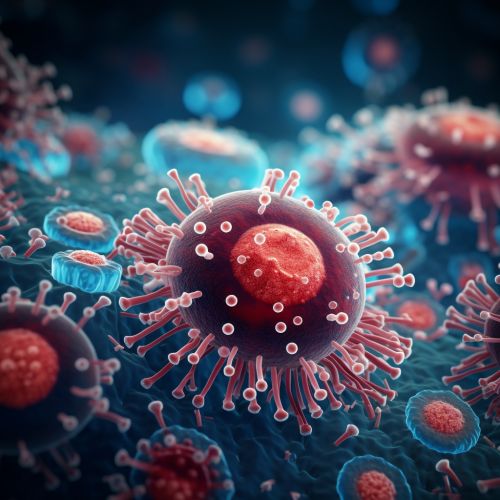Development of Antibiotic Resistance
Introduction
Antibiotic resistance refers to the ability of bacteria and other microorganisms to resist the effects of an antibiotic to which they were once sensitive. This is a significant concern for public health, leading to higher medical costs, prolonged hospital stays, and increased mortality.


Mechanisms of Antibiotic Resistance
Bacteria can develop resistance to antibiotics through several mechanisms. These include genetic mutation and acquiring resistance from another bacterium.
Genetic Mutation
Mutations are changes in the bacteria's genetic material (DNA) that can occur spontaneously or be induced by external factors such as radiation or chemicals. These mutations can lead to changes in the bacteria's structure or function, allowing them to survive in the presence of an antibiotic.
Acquiring Resistance
Bacteria can also acquire resistance from another bacterium through a process called horizontal gene transfer. This can occur through conjugation, transformation, or transduction.
Conjugation
In conjugation, a bacterium transfers a copy of a plasmid, a small, circular piece of DNA, to another bacterium. The plasmid may carry genes that provide resistance to antibiotics.
Transformation
In transformation, a bacterium takes up DNA from its environment. This DNA may come from a dead bacterium that was resistant to an antibiotic.
Transduction
In transduction, a bacterium acquires new genes from a bacteriophage, a type of virus that infects bacteria. The bacteriophage may carry genes that provide resistance to antibiotics.
Factors Contributing to Antibiotic Resistance
Several factors contribute to the development of antibiotic resistance. These include the overuse and misuse of antibiotics, lack of new antibiotic development, and the spread of resistant bacteria.
Overuse and Misuse of Antibiotics
The overuse and misuse of antibiotics in human medicine and agriculture have greatly contributed to the rise of antibiotic resistance. When antibiotics are used unnecessarily or improperly, bacteria have more opportunities to develop resistance.
Lack of New Antibiotic Development
The development of new antibiotics has significantly slowed in recent years. This is due in part to the high cost and difficulty of developing new antibiotics, as well as the relatively low financial return for pharmaceutical companies.
Spread of Resistant Bacteria
Resistant bacteria can spread from person to person, from animals to people, and from the environment to people. This spread can occur in various settings, including hospitals, communities, and farms.
Impact of Antibiotic Resistance
Antibiotic resistance poses a significant threat to public health. It can lead to longer hospital stays, higher medical costs, and increased mortality.
Longer Hospital Stays
Patients with infections caused by antibiotic-resistant bacteria often require longer hospital stays than those with infections caused by non-resistant bacteria.
Higher Medical Costs
The treatment of infections caused by antibiotic-resistant bacteria is often more expensive than the treatment of infections caused by non-resistant bacteria. This is due in part to the need for more expensive drugs and more intensive care.
Increased Mortality
Infections caused by antibiotic-resistant bacteria can be more difficult to treat and can therefore lead to higher mortality rates.
Strategies to Combat Antibiotic Resistance
Several strategies can help combat antibiotic resistance. These include prudent use of antibiotics, infection prevention and control, surveillance, research and development, and education and training.
Prudent Use of Antibiotics
Prudent use of antibiotics, also known as antibiotic stewardship, involves using antibiotics only when necessary and choosing the right antibiotic, dose, and duration of treatment.
Infection Prevention and Control
Infection prevention and control measures can help prevent the spread of antibiotic-resistant bacteria. These measures include hand hygiene, vaccination, and isolation of infected patients.
Surveillance
Surveillance involves monitoring the spread of antibiotic-resistant bacteria and the use of antibiotics. This information can help guide interventions to combat antibiotic resistance.
Research and Development
Research and development can lead to the discovery of new antibiotics and alternative treatments for bacterial infections. It can also improve our understanding of antibiotic resistance and how to prevent it.
Education and Training
Education and training can increase awareness of antibiotic resistance and promote the prudent use of antibiotics. This can involve educating healthcare professionals, policymakers, and the public about the risks of antibiotic resistance and how to prevent it.
